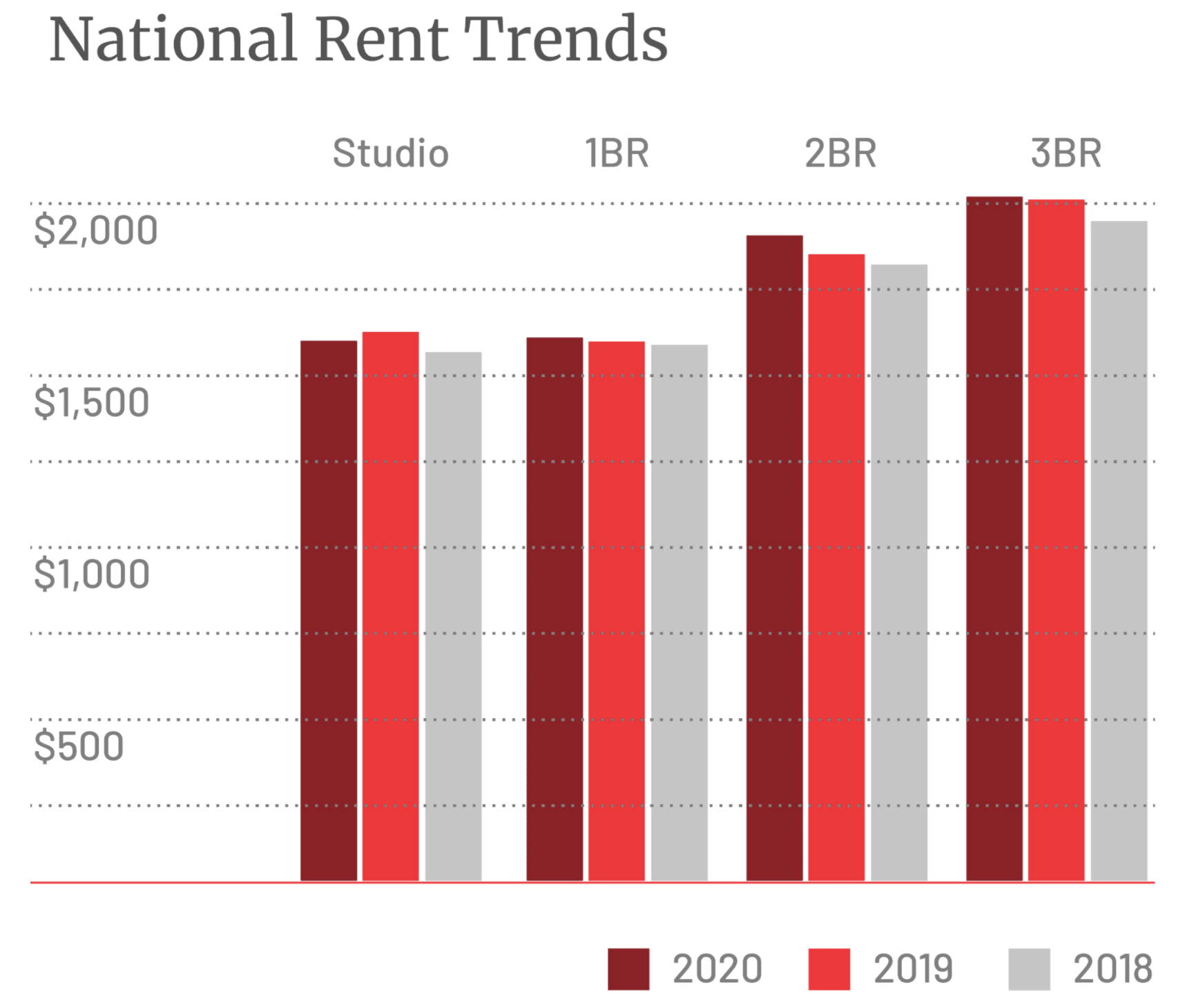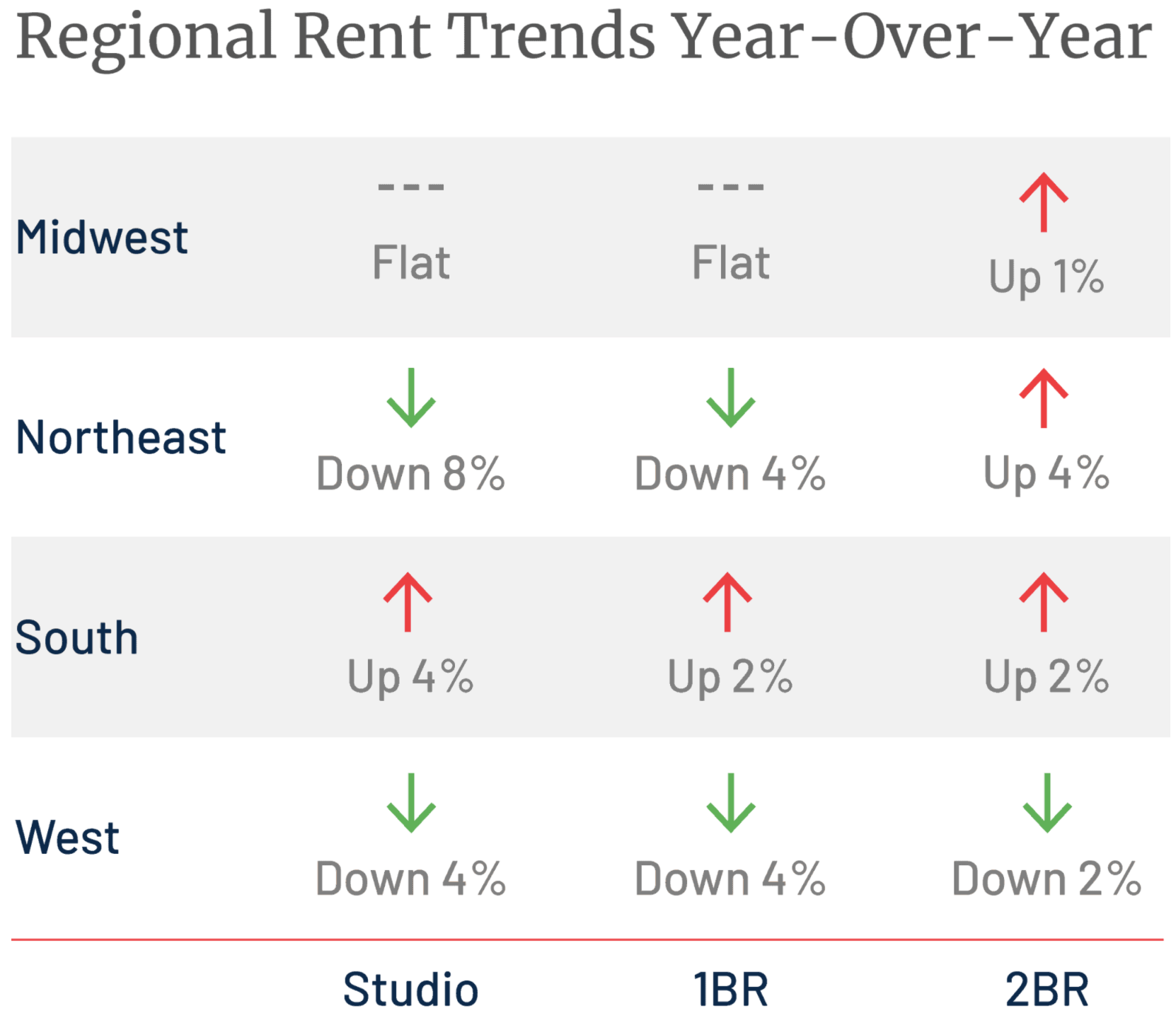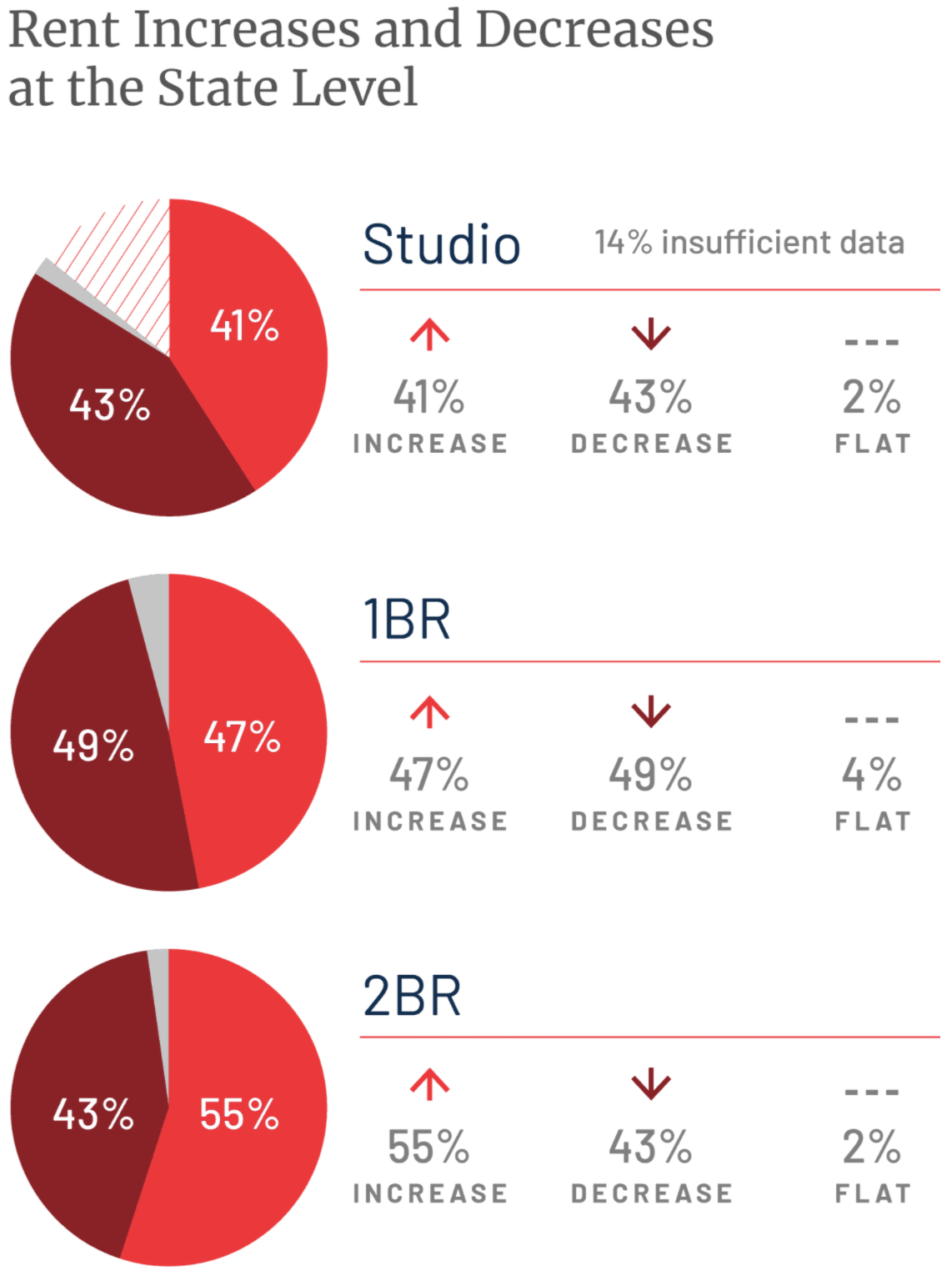Inman News
A new report from Apartment Guide found that studio apartments, which have out-priced one-bedrooms in recent years, are currently the least expensive unit type.
During a period of shifting trends in living, the rental market has seen some notable changes across region and unit type, according to Apartment Guide’s October 2020 Rent Report.
By unit type
For the first time in several years, studio apartments — which have recently out-priced one-bedroom apartments — are the least expensive unit type. Both studios and one-bedroom apartments are trending down in price in the majority of U.S. markets.
Studio prices have increased in 20 cities and decreased in 30 cities over the past year, according to Apartment Guide’s analysis. Similarly, prices of one-bedroom units have increased in 17 markets and fallen in 33.
Two-bedroom unit prices have also shown a slight preference for declining rates, with prices growing in 22 cities and decreasing in 28 cities. Three-bedroom unit prices, on the other hand, have largely risen over the past year, with prices up in 27 markets and down in 23.
Rising rent in larger unit sizes may be a reflection of households combining in the wake of the pandemic, and an increased demand for larger units as a result.
“According to a report released by Pew Research Center in September, 52 percent of adults 18 to 29 are living with their parents because of the pandemic — the first time that a majority of young adults have reported living at home since the Great Depression,” the report reads.

Credit: Apartment Guide
By region
Rent prices have responded to the pandemic and shifting lifestyles in different ways across the country during 2020.
In the West, rent prices have declined across all unit types, between 2 to 4 percent. At the opposite end of the spectrum, the South saw increases in prices across all unit types, again between 2 to 4 percent.
The Midwest and Northeast were more mixed, however. Prices on studios and one-bedrooms stayed consistent in the Midwest while prices of two-bedrooms rose slightly. In the Northeast, studios saw a sharp price decline of 8 percent and one-bedrooms declined in price by 4 percent. Two-bedroom units, however, rose in price by 4 percent.

Credit: Apartment Guide
By state
At the state level, one-bedroom prices saw the greatest declines across the nation with 49 percent of states experiencing a drop in rent price for these units. Both studios and two-bedrooms declined in price across 43 percent of states. Still, 14 percent of states could not be ranked at the studio unit level due to insufficient data, so it’s unclear just how many of those uncounted states may also have seen a decline or rise in studio prices over the past year.
Meanwhile, 55 percent of states reflected an increase in two-bedroom unit prices, the most widespread increase across unit types.

Credit: Apartment Guide
By city
Boston, Los Angeles, New York, San Diego, San Francisco, and San Jose and Oakland, California, as well as Jersey City, New Jersey, all consistently fall into the top 10 most expensive markets for all bedroom types. Among those, San Francisco has seen rent decline across all units.
The highest price a renter paid for a studio in October 2020 was $3,108 in Oakland, California. For one-bedroom units, the priciest rental rate was $3,236 in Boston, Massachusetts. For a two-bedroom unit, though, the most expensive rate jumped up to $4,896 in New York.
On the other end of the spectrum, Oklahoma City (studio rent of $531); Tulsa, Oklahoma (one-bedroom rent of $643); and Wichita, Kansas (two-bedroom rent of $580); saw the lowest rent prices across the three unit types.
The largest rent decreases year-over-year across the different unit types were seen in San Francisco (studio rents down 41.2 percent) and Long Beach, California (one-bedroom rents down 32.9 percent, and two-bedroom units down 41.2 percent).
Many renters and landlords alike have struggled to make payments over the course of the pandemic, and a lack of ample affordable housing is likely exacerbating the problem. As Apartment Guide’s report notes, nearly half of all renters are cost-burdened, meaning they spend more than 30 percent of their income on housing, according to Harvard’s Joint Center for Housing Studies.
